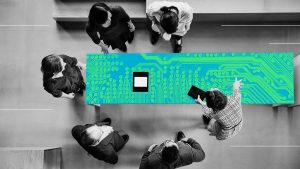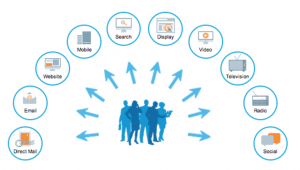AI-powered collaborative work management enables marketing teams to keep up with competition and WFH challenges.
Wearable technology company Fitbit was using Jira for project management, and was looking to increase efficiency for future product cycles. After implementing the Wrike for Marketers solution, the marketing team reported slashing 400 hours of meeting time per year, and over 50% less time spent on project management because of the way it was intelligently automated.
The tool also connects international teams with the Fitbit headquarters on a centralized platform that supports WFH and hybrid work models. Fitbit has approximately 1,700 employees in 15 offices in the US and around the globe.
“I know those teams can often feel disconnected from the work that’s happening in the central office,” said Fitbit Director of Creative Operations Brynne Roberts. “[When] I send out weekly reports that share updates on launch progress,any team can scan them to see if they’re reflecting their needs and deadlines. It helps ensure no team gets left out.”
For marketing teams specifically, the review process can eat up a lot of meeting time.
Roberts explained the workflow efficiencies that came out of the solution: “We give stakeholders a certain amount of days to give their feedback. The lead stakeholder is responsible for vetting other stakeholders’ comments and determining what they agree with or not.”
She added, “From there, our internal team meets to review all the feedback saved in Wrike. The whole process helps us make sure everything is acknowledged and properly understood.”
Her team also saved over 200 hours spent tracking launch marketing materials using Wrike’s dynamic timelines tool.
Collaborative work management
“Collaborative work management is becoming a critical part of the workplace stack,” said Saranya Babu, SVP of Marketing for work management software company Wrike. “It used to be something that would increase productivity, but now it has become a critical piece essential to enabling remote work.”
Workers and managers across organizations have been forced to adopt a more remote digitized workflow, and marketers are looking to technology, especially AI, to gain a competitive edge and scale their marketing efforts.
“People are overburdened with the number of apps they need to plug into, the emails that need to be read, the messages that need to be addressed and meetings they need to attend,” Babu said. “And all of this is leading to reduced productivity.”
She added, “The shift to remote work last year, and the upcoming shift to hybrid work that’s happening this year, are adding to the complexity. We need to significantly improve the way we work.”
Using AI in collaborative work management
In order to execute and track marketing work, some form of digital work management is necessary. But once these creative assets and strategic tools are connected, they can benefit from AI-powered automation.
Take creative optimization in ads, for instance. It’s one thing for a DSP to use AI to match the right assets with the right audience when executing a campaign. But if the marketing team is already using AI and first-person data in a coordinated workflow earlier in the process, they can experiment even quicker and at a greater scale to create the most effective ads.
Even in the everyday life of a marketer, the presence of AI technology has given a taste of how workflow can be improved. “Devices like Amazon Alexa have gotten us used to giving voice commands to do some quick actions,” she explained. “Personalization technologies like Netflix recommendations have trained us to expect intelligent suggestions based on our past actions.”
Most critically, this also holds true for what customers expect from marketing efforts. “Customers expect a highly personalized experience and don’t want to give anybody a second chance,” Babu said.
Adopting intelligent work management
When choosing an AI-powered management tool, consider that the engine draws intelligence from the other work teams that already use it. This allows marketing projects to be developed by your team in a predictive way, becoming more efficient than if you were using a project management tool without AI.
For instance, Wrike currently has over 2.6 million users. “Wrike uses machine learning to tap into this data, learn behaviors and patterns to predict outcomes, automate workflows and make intelligent recommendations,” said Babu.
One of the main advantages that a marketing team can gain from this kind of intelligence in their own organization is to avoid potential delays, mitigate risks and cut losses using these early warnings and predictions that are surfaced by the AI.
“This uses historical work patterns to predict delays, resource shortages or other roadblocks earlier than you would, so this can really help you minimize and even prevent losses,” Babu said.
In a similar way, recommendations from the AI surface the next task that team members should be working on, in order to speed along the process in the most efficient way possible, while also improving response times, meeting deadlines and focusing on what matters.
AI-powered collaborative work management also enables hands-free voice commands and rapid, automated responses so workers aren’t wasting time typing everything out, which is especially needed in the current work-from-home climate.
“With this transition to remote work and hybrid setups, there are many employees that are having to manage other things at home while they’re working,” said Babu.
The post Making AI work for workflow management appeared first on MarTech.
MarTech(50)
Report Post





